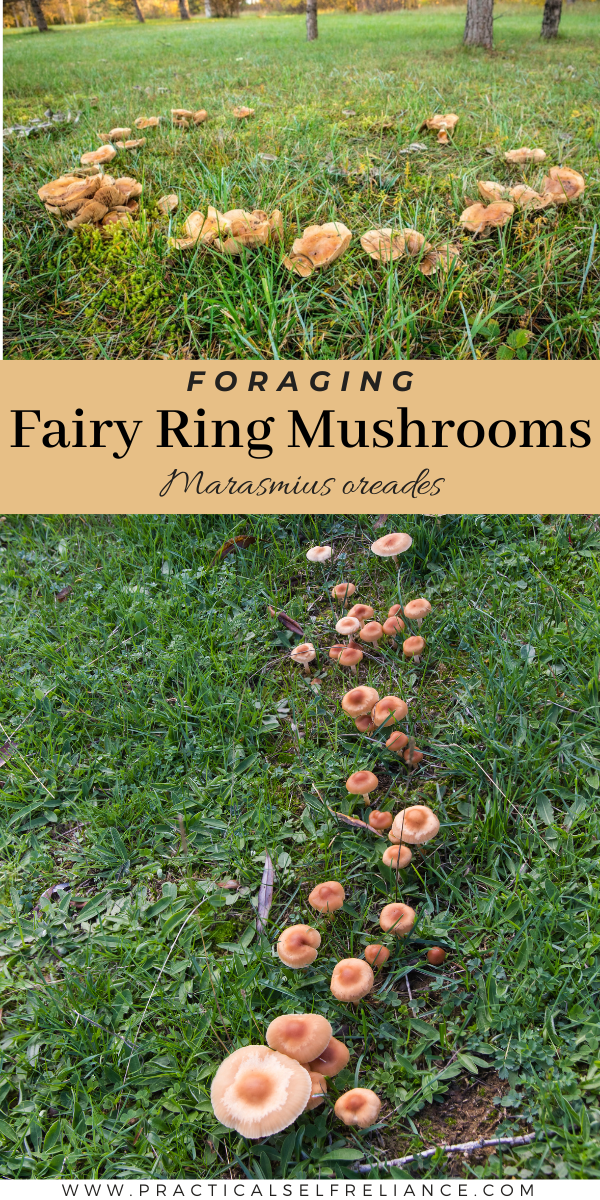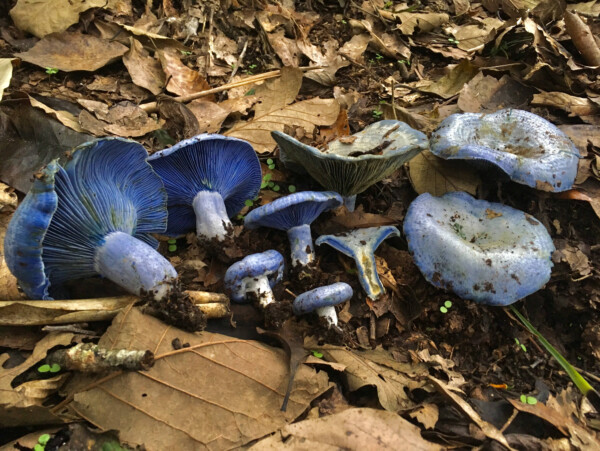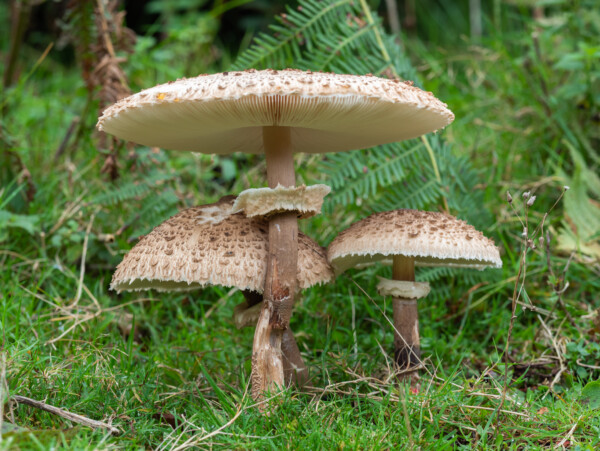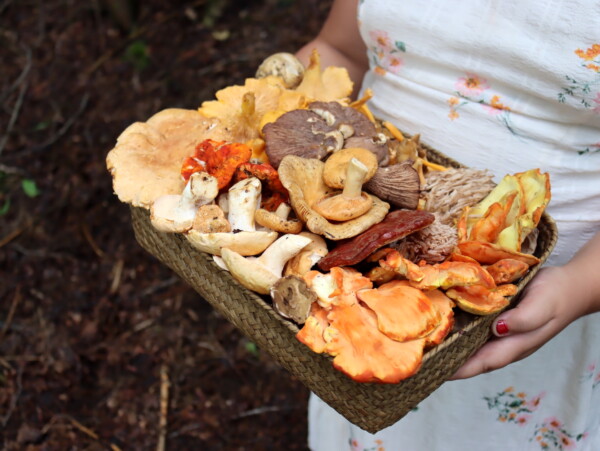Affiliate disclosure: This post may contain affiliate links. Please see our Privacy Policy.
Fairy Ring Mushrooms, scientifically known as Marasmius oreades, are small edible mushrooms commonly found in pastures and grassy habitats around the world.

This article was written by Timo Mendez, a freelance writer and amateur mycologist who has foraged wild mushrooms all over the world.
The name “Fairy Ring” is one of the more colorful mushroom names, and this one comes by it with good reason.
Its name is derived from the fact that it often fruits in a ring-like pattern known as “Fairy Rings”. This species is also regularly called “Fairy Ring Marasmius” to distinguish it from other mushroom species that grow in this pattern, some of which may be toxic. While foragers in North America do not highly revere it, it is highly valued in many parts of Europe where it can be readily found in markets.
In European folklore, Fairy Rings are often associated with supernatural beings and are occasionally called “Witches Circle ”. In some folk tales, stepping inside the Fairy Rings is regarded as bad luck or dangerous. Some legends claim that Fairy Ring Mushrooms grow in the footsteps of where Fairies were dancing the night before.
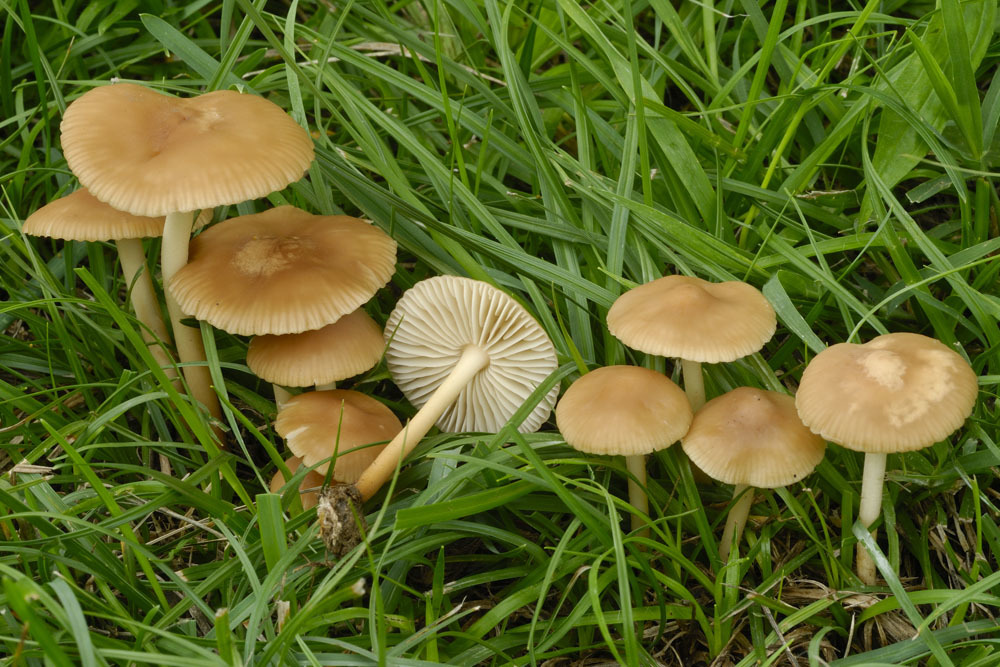
Natural History Of Fairy Ring Mushrooms
Fairy-ring mushrooms are soil decomposers, most often found inhabiting grassy habitats. Pastures, lawns, and meadows, as well as grassy trail-sides, are all common habitats for this mushroom. Their distribution extends to temperate parts of the northern hemisphere, although they can also be found in the southern hemisphere.
They are considered “secondary decomposers” as they largely feed on well-decomposed organic matter found in rich soils. Despite their name, they do not always occur in Fairy Rings and they are not the only mushrooms to grow in this pattern. A few toxic species grow in Fairy Ring patterns, so it is not a reliable identification feature.
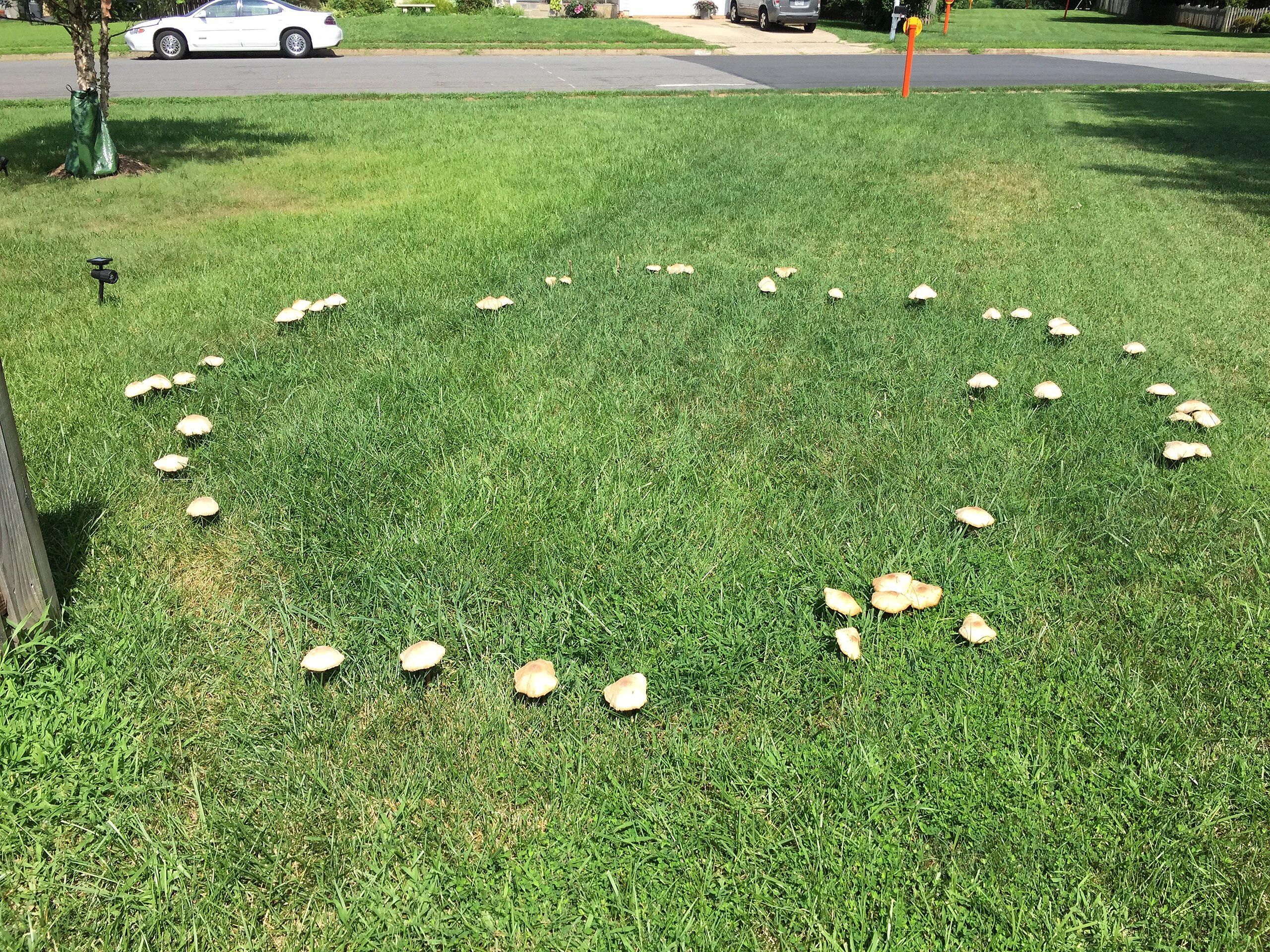
The growth of Fairy Rings is a natural phenomenon that is easily explained by the biology of fungal growth. Essentially, when a fungus starts growing in a relatively homogeneous substrate, it expands its mycelium (the white cotton-web body of the fungus) outwards at 360 degrees.
This phenomenon is well portrayed when fungi are cultivated in petri dishes. When conditions are right, the fungus will produce its mushrooms at the extremities of the mycelium, forming the rings of mushrooms we see above ground.
As the fungus grows, the mycelium at the center starts dying back (as its food source becomes exhausted), causing the mycelium to also grow in a ring-like form. Curiously, many Fairy Rings tend to have greener and lusher grass at their centers, thanks to the nutrients released by the fungus as it breaks down organic materials.
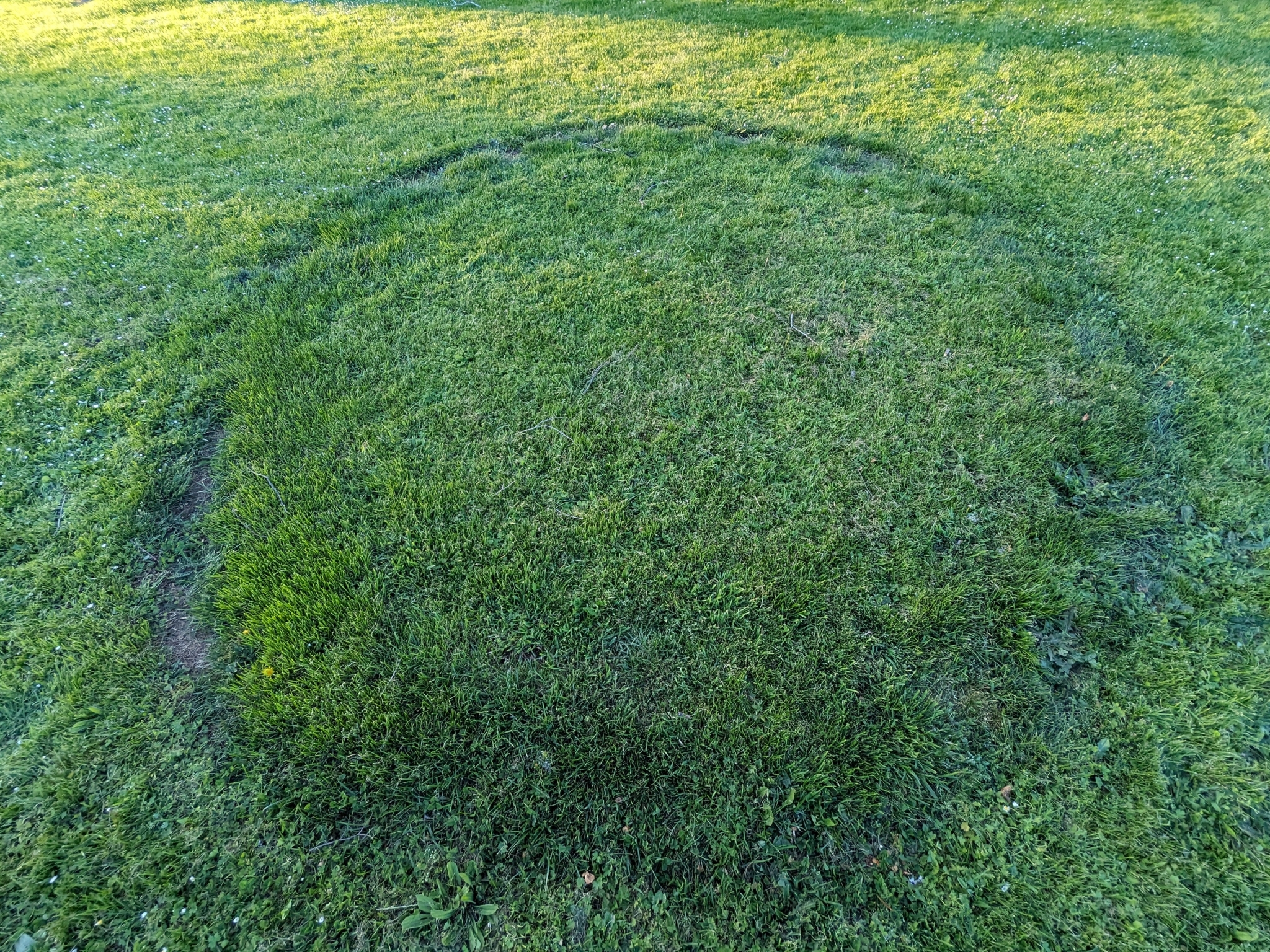
How to Identify Fairy Ring Mushrooms
Aesthetically, Fairy Ring Mushrooms aren’t the most charismatic species. They’re small, pale, and nowhere near as striking as larger and fleshier fungi. Even experienced foragers pass them by completely. I was guilty of this before I learned how delicious they are. In North America, many foragers tend to stay away from all “Little Brown Mushrooms” like the Fairy Ring Mushrooms.
When it comes to identifying these mushrooms, the first thing you’ll want to note is the habitat. If the mushroom isn’t growing in a grassy habitat, then it’s unlikely you have a true Fairy Ring mushroom. There are exceptions, but they are far and few.
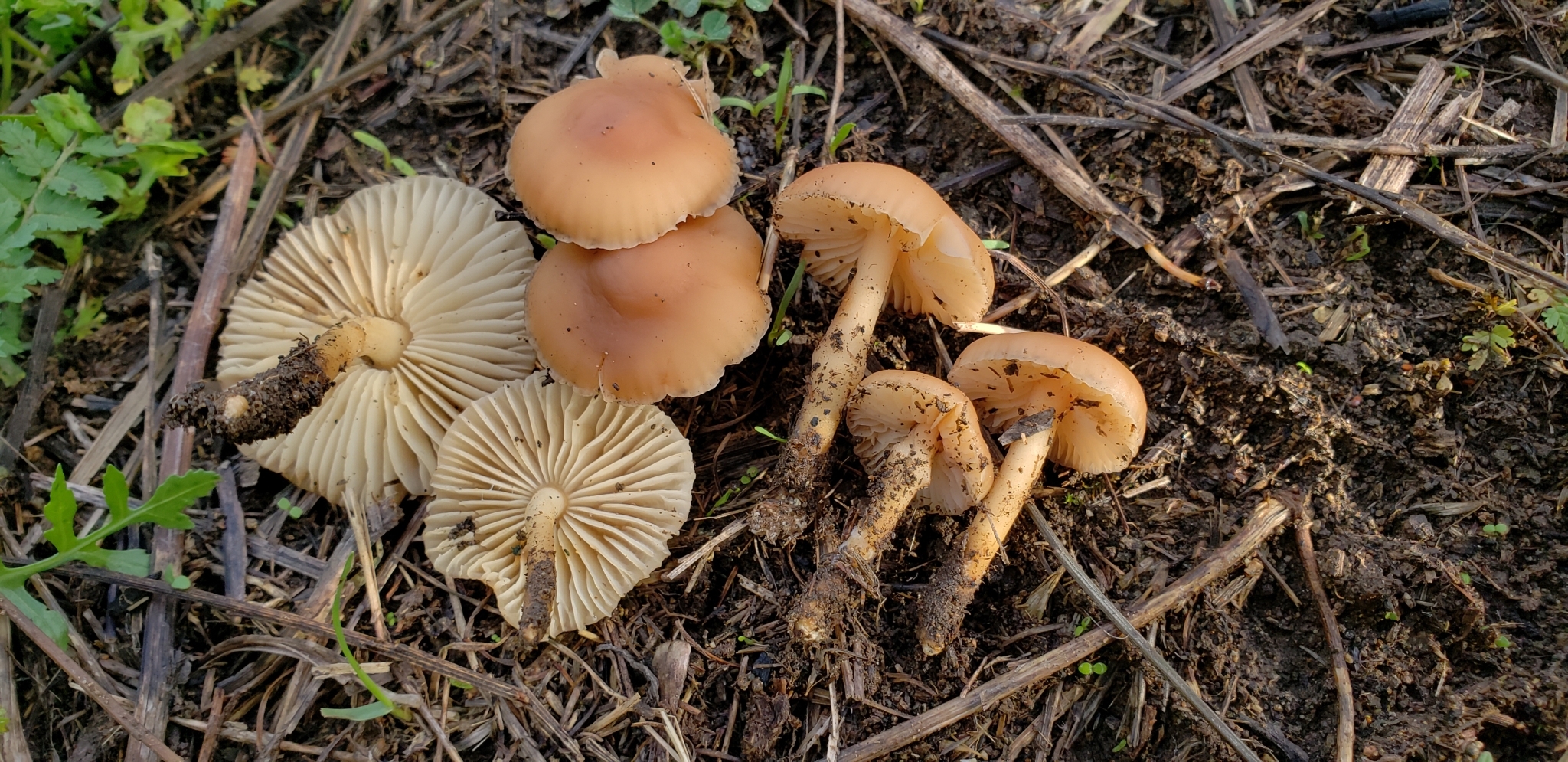
The next thing you’ll notice is that you are dealing with fairly small mushrooms. They are only about 2–3 inches and not dense, stocky, or chunky by any means. The cap is just 1-2 inches in size, about the size of a penny, and it is typically tan but can be white or brown. Sun-stricken mushrooms tend to get “bleached” and have a white appearance.
Oftentimes, the cap has a distinct central umbo that forms a bell-like curve towards the margin. Many specimens have lightly striated margins.
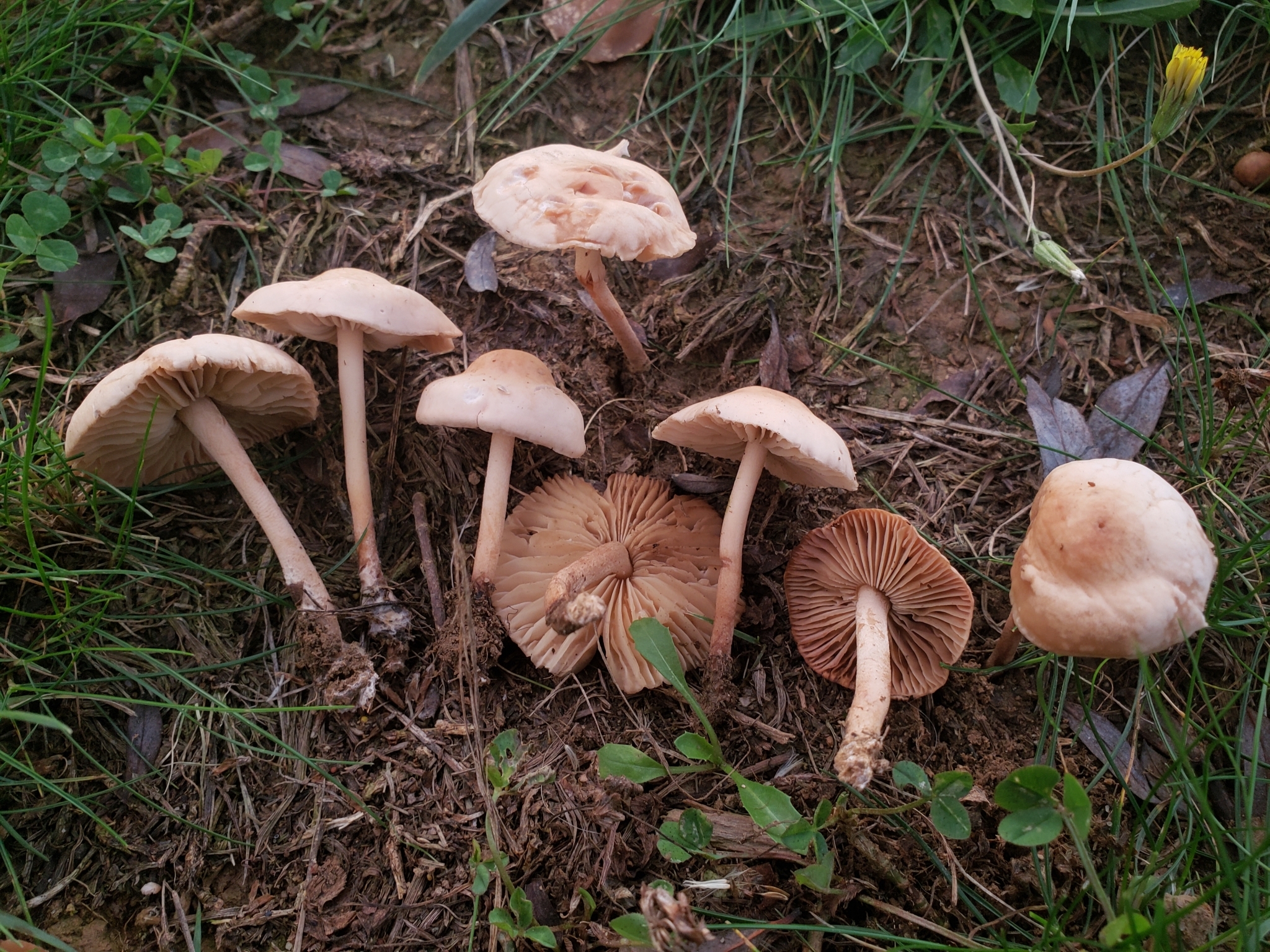
The gills are white, firm, and fairly spaced apart from each other. If you make a spore print, you will see that the spores are white. One distinct thing about these mushrooms is that the stems are particularly tough and pliable. You can pick them up and manipulate the stem without them breaking into pieces. Many other small white mushrooms have relatively fragile stems. The stems are white and oftentimes fade a tan color towards their base. The base of the mushrooms taper to a point and are not swollen or bulbous.
Identification Features of Fairy Ring Mushrooms
- Typically found in grassy areas, particularly forming rings in lawns or meadows.
- Small mushrooms, about 2-3 inches in height with caps around 1-2 inches in diameter,.
- Generally white or tan, occasionally very light brown.
- Caps often have a distinct central umbo and bell-shaped curve.
- The gills are white, firm, and spaced apart.
- They have a white spore print.
- The stem is tough, pliable, and not easily broken. It is white, fading to tan at the base.
Fairy Ring Mushroom Look-Alikes
Fairy Ring Mushrooms have a number of look alikes, including:
Fiber Caps (Inocybe sp.)
There are many different types of Fiber Caps, some of which have a similar appearance and habitat to Fairy Ring Mushrooms. Some of these can be very toxic. The main difference you’ll see with these mushrooms is that they have brown-colored gills as opposed to the white gills in Fairy Ring Mushrooms.
Fiber Caps also have brown spores. Many Inocybe species also have visible fibers on their cap surface, hence the name Fiber Cap. They can be completely white, brown, or even violet.
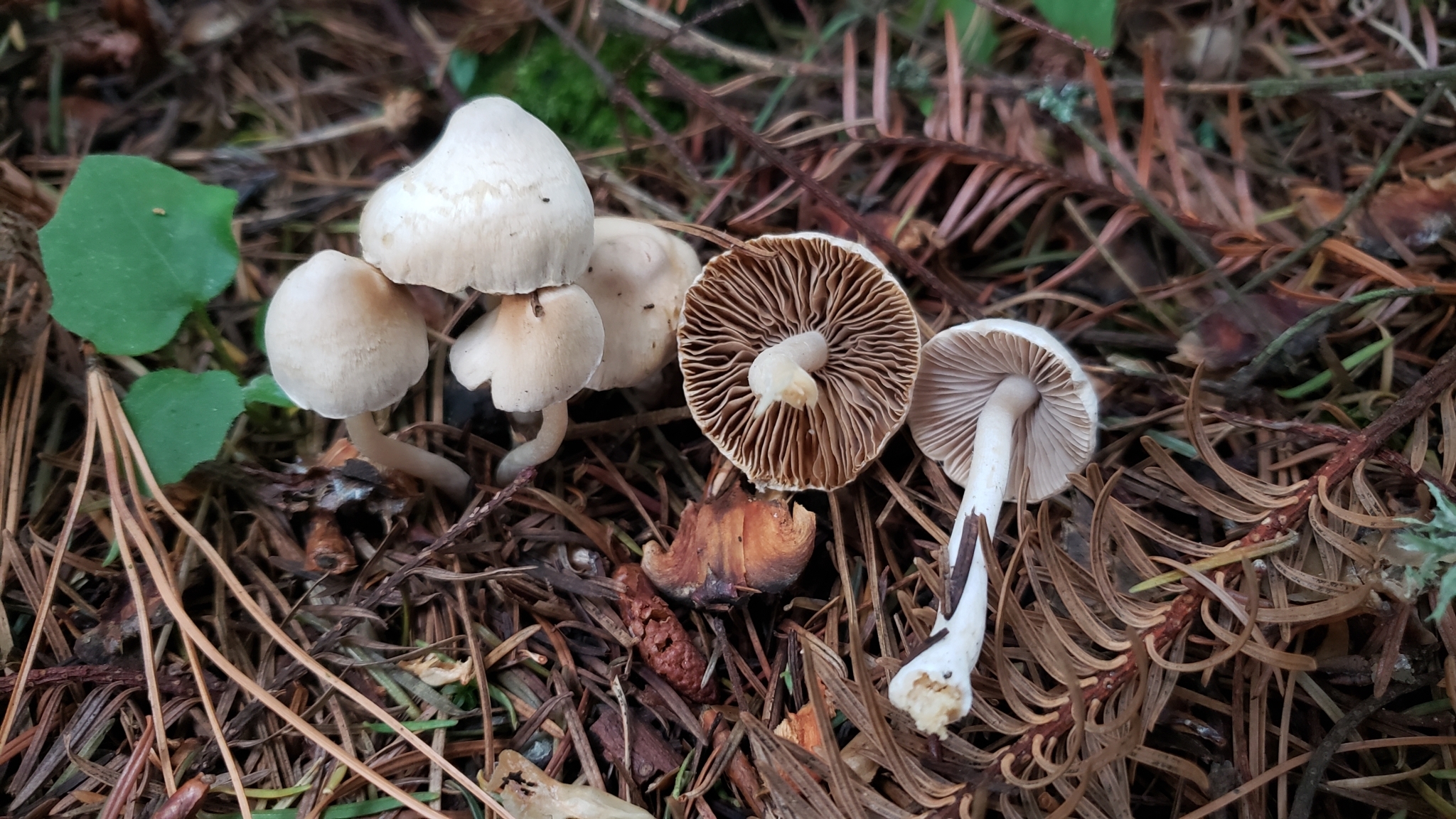
Oak Loving Gymnopus (Gymnopos dryophilus)
This mushroom grows in wooded areas, particularly those dominated by Oak. It can look pretty similar to a Fairy Ring Mushroom but its gills are much more closely spaced and it doesn’t have the bell-curve cap shape.
The stem is also often flat or wrinkled and has a consistent color.
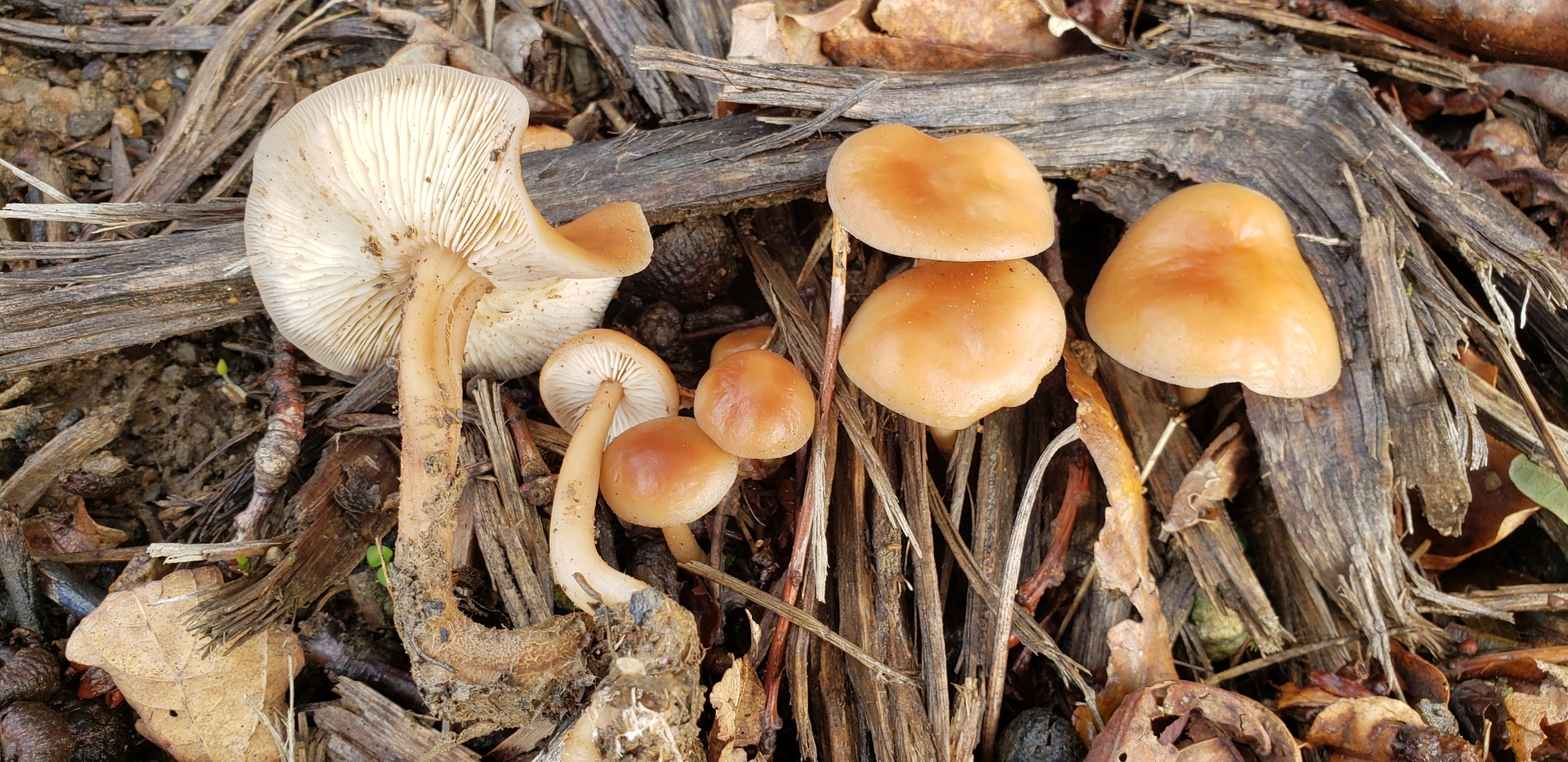
Field Mushrooms (Agaricus sp.)
While they look quite different, field mushrooms can also grow in Fairy Rings and confuse new foragers. They are much larger and chunkier, and they also have pinkish gills when young that eventually turn brown.
While some Agaricus Mushroom Species are edible, you should study the proper identification features before picking them!
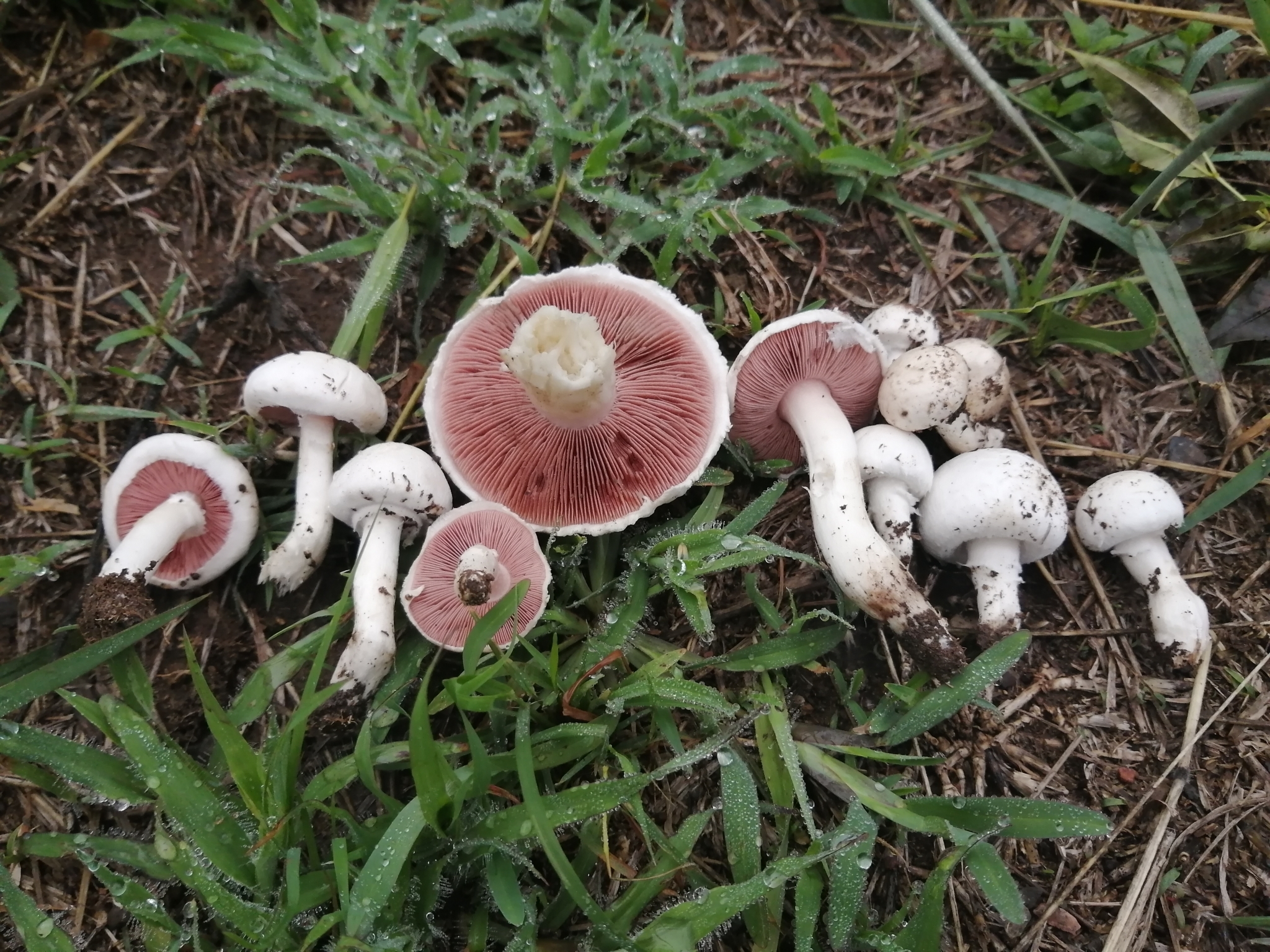
Other Little Brown Mushrooms
The truth is, there are a lot of little brown mushrooms that may look similar to the real Fairy Ring Mushrooms.
If you have any doubt about the identity of the mushrooms, don’t eat them without confirming their identity with an expert!

Where To Find Fairy Ring Mushrooms
Fairy-ring mushrooms occur in temperate climates around the world. In North America, they occur from Canada to Mexico, and likely in every continental state of the US. They are ubiquitous in Europe and are also found throughout Asia. While they’re not as common in the southern hemisphere, people do find them in southeastern Australia, New Zealand, and South Africa.
They are mostly found in pastures, meadows, lawns, and other habitats dominated by grasses. This isn’t a mushroom you’ll typically find in the woods, but it can be spotted on forest edges or on large trails/roads that create a large gap in the canopy. Fairy Ring Mushrooms are relatively common in urban settings too, growing in lawns and parks, but it is not typically recommended to eat mushrooms from these locations due to pollution.
Fairy Ring Mushrooms require the presence of fertile topsoil and rarely occur in areas with exposed, rocky, and unvegetated soils. Valley bottoms and other areas where the topography is flat can be great places to find these mushrooms. I find that these mushrooms are particularly common in pastures where goats or sheep have grazed.
When Is Fairy Mushroom Season?
Generally speaking, Fairy Ring Mushrooms can be found at any time of the year when there are suitable temperatures and moisture. They are most common in the fall and also have a spring flush in some regions.
California: In California, the peak season is typically from September to December. They can also be commonly found in the spring, between April and May. In moist coastal regions, it may be possible to find them year-round.
Pacific Northwest: In the Pacific Northwest, you can find Fairy Ring Mushrooms in the fall and spring. The main season usually starts around mid-August and lasts until the end of November. The spring season lasts from April until the end of June. Like in California, some regions may have suitable conditions year-round
Northeastern United States and Canada: In this region, the season typically starts around June and lasts until October. There is often an early-season flush in the summer and a late-season flush at the beginning of the fall.
Southwestern United States: In the Southwestern United States, they can be found almost year-round, especially in areas with irrigation. There is typically a first big flush around May and June, followed by another around September.
Southeastern United States: Here, the peak season is typically from July to September, although it can also occur in the spring.
Colorado and the Sky Islands: Here, the season typically lasts from May to September. Peak season is around June and July.
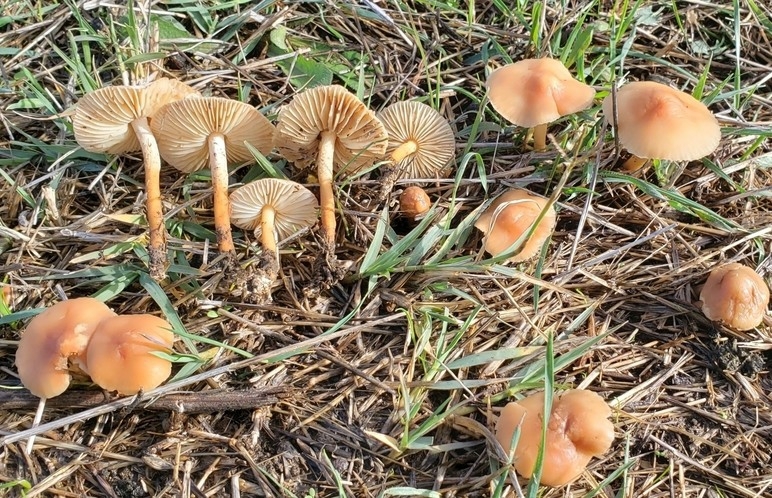
How To Harvest Fairy Ring Mushrooms
Foraging anything from the wild should be done with utmost care and respect. Don’t litter or cause any unnecessary disturbances to the landscape. Also, ask permission from private land owners or get a permit for public lands if necessary.
The first thing you should do when you find a patch of suspected Fairy Ring Mushrooms is to verify their identity. Check over the identification features, and if you aren’t sure, document them thoroughly with photos to help you identify them later. If you have doubts, consider just taking 2 or 3 specimens (this is better than taking just a single specimen) home to identify them thoroughly. For identification, it’s best to harvest the mushrooms with their stem base.
When it comes to harvesting them for eating, I recommend using a knife or even scissors. These mushrooms tend to bring dirt with them when they are plucked out of the ground, so you can avoid making an unnecessary mess by cutting them. If you don’t have a sharp object for cutting, you can also cut the stems by simply pinching them between your fingers. Believe me, this will save you a bunch of clean-up work later and prevent you from getting an unpleasant bite of sand in your meal!
These mushrooms typically occur in large patches, so make sure to scope out the size and distribution of the patch before getting on the ground to pick them. Like most small mushrooms, picking these can take a while. I suggest only picking the prime specimens and leaving any old or very young specimens behind. While most mycologists would agree that harvesting all the mushrooms won’t damage the patch, it’s always nice to leave some behind for wildlife and potentially other foragers.
When you arrive home, I recommend immediately washing the mushrooms in a bowl of water. Afterward, let them dry on a towel for a couple of hours until they aren’t completely saturated.
Cooking With Fairy Ring Mushrooms
Fairy Ring Mushrooms have a delicious nutty flavor. The first time I tried them, I was pleasantly surprised that they weren’t more popular in North America. My friend in France, who worked as a professional chef for many years, told me that in Lyon this mushroom is one of the most valued.
To prepare these mushrooms, the first thing you should do is remove the stems. The stems are very fibrous and chewy, so they don’t make a great addition to the meal. Generally, these are tossed, but I like to save them for stock if I have a lot of them.
Personally, what I like to do with most mushrooms is just saute them with a bit of garlic and olive oil or butter. They will release a lot of water, so let this evaporate and reduce. Many folks prefer the dry-saute method (where fats are only added after all the water has evaporated), but I don’t find much of a difference with this specific mushroom. I salt them to taste and then add them on top of my favorite meal. You could also add a bit of cream, which compliments the delicious nutty flavor.
These mushrooms can be paired with any savory meal. Pasta, omelets, risotto, or even on top of a fresh salad are all great options. In France, I tried them with a mustard cream sauce, which was fantastic. I have also seen recipes with duck fat and white wine that sound phenomenal.
Preserving Fairy Ring Mushrooms
There are many ways to preserve Fairy Ring Mushrooms, but the best is to simply dehydrate them. They dry very easily compared to most other mushrooms, and in most cases, you don’t need a dehydrator. Simply leaving them near a window sill or somewhere with lots of ventilation is generally enough for them to dry out. If you have heaters in your home, just letting them sit on a plate will do the trick.
When you want to cook the dried mushrooms, simply let them sit in water for 5-10 minutes. Miraculously, these mushrooms look almost identical to their original state when rehydrated. In some European countries, they will rehydrate their mushrooms in milk.
The other good option for preserving this mushroom is to simply saute it or boil it in its own juices, then freeze it. You can then simply defrost the mushroom and throw it into any meal you desire. Do not freeze uncooked mushrooms, as their texture will significantly drop in quality once thawed.
Mushroom Foraging Guides
Looking for more edible wild mushrooms?
- Morel Mushrooms
- Puffball Mushrooms
- Shaggy Mane Mushrooms
- Dryad’s Saddle
- Cauliflower Mushrooms
- Yellowfoot Chanterelles
- Saffron Milk Caps
